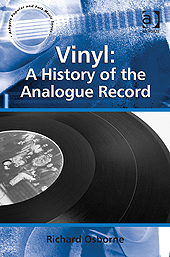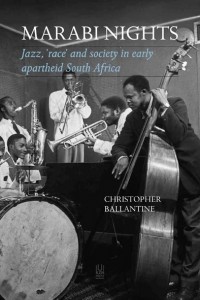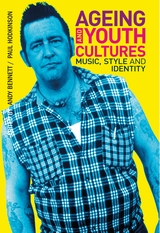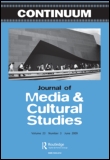New book
Vinyl: A History of the Analogue Record
Richard Osborne
NIGHTS 2013
Call for contributions
NIGHTS 2013
Health, Pleasure and Communities
Padova, Italy
25-27 September
Download the call for contributions for Nights 2013: Health, Pleasure and Communities, the first international conference derived from the Nightlife Empowerment and Well-Being Implementation Project.
See the conference website for more details.
IASPM 16th International Conference Proceedings
New publication
Situating Popular Musics
IASPM 16th International Conference Proceedings
Edited by Ed Montano and Carlo Nardi
We are pleased to announce that Situating Popular Musics: IASPM 16th International Conference Proceedings is now online. Continue reading
IASPM 2013 Conference Website
IASPM 2013 Conference Website
http://iaspm2013.espora.es/
Registration now open
The new website for the 17th IASPM International Conference in Gijón, Spain, 24-28 June 2013 is now online: http://iaspm2013.espora.es
You will find information regarding travel and accommodation, a list of accepted proposals, registration details, and much more.
Registration is now open. The deadline for “early bird” registration is 17 March.
Marabi Nights – Jazz, ‘Race’ and Society
New book
Marabi Nights – Jazz, ‘Race’ and Society in Early Apartheid South Africa
Christopher Ballantine
Marabi Nights – Jazz, ‘Race’ and Society in Early Apartheid South Africa is an updated and substantially expanded second edition of Christopher Ballantine’s classic study of the triumphs and tragedies of South Africa’s marabi-jazz tradition. New chapters extend the book’s in-depth account of the birth and development of urban-black popular music. Continue reading
Waterman Prize
Richard Waterman Prize Competition
Popular Music Section of the Society for Ethnomusicology
Deadline: 1 April 2013
The Popular Music Section of the Society for Ethnomusicology is pleased to announce the 2013 Richard Waterman Prize competition. The prize was created to recognize the best article by a junior scholar in the ethnomusicological study of popular music published within the previous year, in any publication. The Prize comes with a cash award of up to $200. Continue reading
Dancecult Crowdfunding Initiative Launched
Dancecult: Journal of Electronic Dance Music Culture
Crowdfunding Initiative
http://www.indiegogo.com/dancecult
Dancecult: Journal of Electronic Dance Music Culture needs your help to remain operational. Dancecult is a peer-reviewed, open-access journal for the study of electronic dance music culture (EDMC). Launched in 2009, it is the mothership of the global EDMC research network. In November 2012, we published our 6th edition, maintaining a twice-annual publication schedule, but today Dancecult is in crisis and needs your help to meet expenses essential to the journal’s operation and to ensure our survival. Continue reading
Senior Lecturer in Popular Music
Senior Lecturer in Popular Music
Department of Contemporary Arts
Manchester Metropolitan University (Cheshire Campus)
Closing Date: 31 January 2013
The Department of Contemporary Arts at Manchester Metropolitan University (Cheshire Campus) invites applications for a senior lecturing position in the area of Popular Music. Continue reading
Ageing and Youth Cultures: Music, Style and Identity
New book
Ageing and Youth Cultures: Music, Style and Identity
Edited by Andy Bennett and Paul Hodkinson
What happens to punks, clubbers, goths, riot grrls, soulies, break-dancers and queer scene participants as they become older?
For decades, research on spectacular ‘youth cultures’ has understood such groups as adolescent phenomena and assumed that involvement ceases with the onset of adulthood. In an age of increasingly complex life trajectories, Ageing and Youth Cultures is the first anthology to challenge such thinking by examining the lives of those who continue to participate into adulthood and middle-age. Showcasing a range of original research case studies from across the globe, the chapters explore how participants reconcile their continuing involvement with ageing bodies, older identities and adult responsibilities. Breaking new ground and establishing a new field of study, the book will be essential reading for students and scholars researching or studying questions of youth, fashion, popular music and identity across a wide range of disciplines.
Erotic Screen & Sound
New journal issue
‘Erotic Screen & Sound’
A special edition of Continuum: Journal of Media and Cultural Studies 26(4)
Edited by Jodie Taylor and David Baker
Sexual desire and the intent to arouse—the erotic—is ubiquitous. Erotic impulses preoccupy our psyches, shape our identities, inscribe our bodies and mediate our relationships with others and objects. Proliferating into the banal everydayness of contemporary life, we find inscriptions of the erotic in the back corner of our local news agency, online, on stage, screens, airwaves, billboards, supermarket shelves, and on gallery walls. A public, private and often highly politicised concern, few subjects are as simultaneously commonplace and controversial as the erotic. Whatever its form—sacred, profane, ordinary, perverse, vanilla or kinky—the erotic has persisted in its ability to delight, entertain, panic and outrage us throughout history and across cultures. Continue reading






